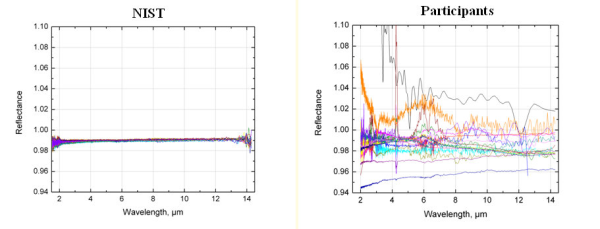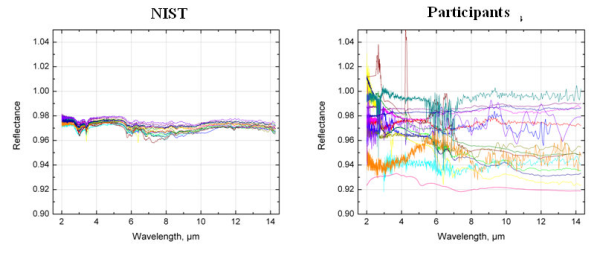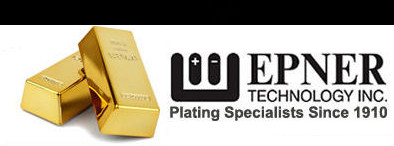I was indeed flattered when Leonard Hanssen of NIST requested us to supply a quantity of twenty-five specular mirrors coated with Laser Gold, and the same quantity of diffuse substrates that he would supply, on which we would do the Laser Gold plating.
Our mirrors were diamond turned copper blanks supplied by Kugler of Salem, Germany, while the NIST blanks were roughened by arc-spraying aluminum on a machined brass substrate.
The Epner mirrors were two samples, of a five sample group that was individually calibrated at NIST and then sent to twenty-three participating optical laboratories in a groundbreaking nationwide “Star” Intercomparison of Infrared Reflectivity, with each lab getting its own separate sample set.
Incredibly, the Epner Technology specular mirrors, when calibrated by NIST prior to their distribution to the participating labs, all tracked at 99 percent with each mirror creating a single flatline on the graph! (see Fig.1)
Fig. 1

Our rough, diffuse Laser Gold coated samples showed similar consistency when measured by NIST for the pre-comparison data points. (see Fig. 2)
Fig. 2

While the measurments of the specular sample from a few of the 23 participants ranged from 94% to 102%, according to Leonard Hanssen and Boris Wilthan, Directors of the study, the overall comparison results were “encouraging.”
To obtain the complete report of this unprecedented study, including the list of the 23 participants, the stucture and analysis of the results, including all the graphs, click below (All this makes for a large file [9.95MB], so be patient!).
Source: New feed
